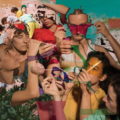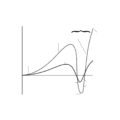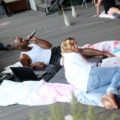Desert Storm: “Plateau Effect”, Staatsballett Berlin
At the beginning, the cloth looks like a gigantic monochrome surface. It replaces the curtain that usually divides stage and auditorium. Dancers come up and form a row with their backs close to the hermetic fabric. At first, its smooth and pale surface makes it resemble a wall of polished concrete, but then the performers begin to row wildly through the fabric behind them with stretched, searching arms. Together they bring it into vibration, trembling, shaking, waves. The light creates strong contrasts on the fabric, expressionistic ups and downs in the otherwise plain beige. It seems as if the dancers soften cement that was already hardened, making it light and thin, as if they were liquidizing a plateau that before was firm enough to step on. Then, however, the upper bodies of the dancers who also wear nature-colored clothes disappear, camouflaged in the muddy mass. More and more, the moving fabric fully hides their bodies. Although the moving of the material seems to emerge from the dancers, it swallows them at the very same time. Thus begins a game of diffuse tensions, in which the forces‘ directions always remain unfathomable.
The gentle waves become deep furrows, mountains, craters, ravines. Accompanied by bass rhythms, the movements take on a dramatic quality, a rushed speed. Everything has to go very fast. The fabric falls from the ceiling, now left to the performers. They become organizers of a material spectacle, embody the movements of the cloth and bring their bodies into the large sheet, stretch it on hooks and build new worlds. From mimeting nature phenomena they arrive at industrial constructions, using ropes to tame the textile monster. No time. They continue with tearing down the fourth wall, the cloth now also protrudes into the audience’s interior, techno flows through hundreds of bodies in the audience. The stroboscopic play of lights paralyses the view, makes it dull and flat. All that can be seen is red, blue, purple, white, red, blue, purple, white.
Although the performers stretch and pull the fabric across the height and width of the stage for an hour, this struggle for ever new constructions is anything but the obvious, childlike tug-of-war antagonism. Nor does it evoke the romance of peaceful common tent construction. Instead, this performance intrigues with a setting in which the diffuse, often overlapping tensions can no longer be assigned to the individual dancers. It is fully obscure how the precisely moving actors are involved in this game, what part each individual plays in the ephemeral, bold designs.
This tension is productive, but at the same time the cloth in the hands of the dancers will never again become the even surface which it was when it was still figuring as a curtain. Only once do the performers spread it out flat over the floor. They even dare to walk on the plane. The techno sound is now muted for the first time. A patient, almost medical beeping starts.
For a moment the plateau seems to stabilize. A moment of calm after the storm. The trembling bodies let themselves sink on the material. The dancers rest on the fabric like on a carpet. But it quickly becomes clear that it is actually the underlying stage floor that supports the performers. They stand up and roll the fabric to form a new figure. As a collective they erect the cloth to a kind of figurehead, a super-being, a dragon, which they are now unable to control. And so it ends. Time is up, an hour has passed, the wild hustle and bustle, the choreographed chaos culminates in a final structure of sail and rope.
Elsewhere, the confusing, collective conflict is often presented in a simplified form as an archaic duel. Even outside the realm of art, conflicts are usually staged as direct confrontations with clearly distributed roles. It is sometimes said that this is an attempt to reduce social complexity which could never be represented. Seeing Plateau Effect, this explanation no longer applies. Here, the collective struggle for a common design becomes visible. The piece explores the critical renegotiation of community forms. The audience experiences the eerily familiar but rarely theatrically reflected situation of collective coordination in emergencies, when literally anything that was taken for a ground, a certainty, a paradigm, is liquified and when new designs must be found.
Janine Muckermann and Lena Schubert
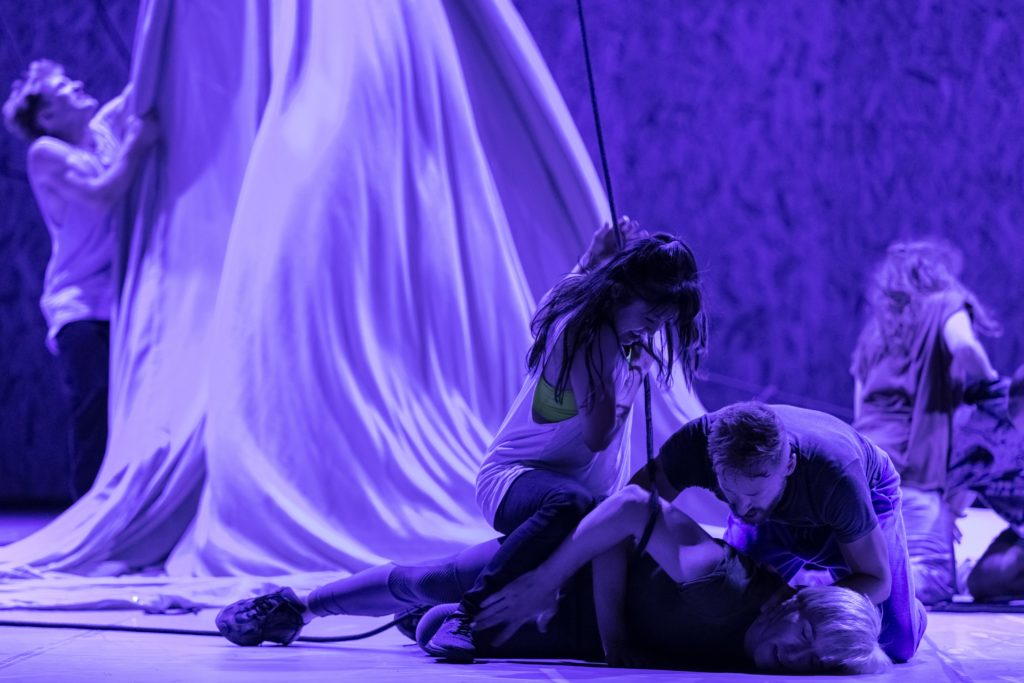
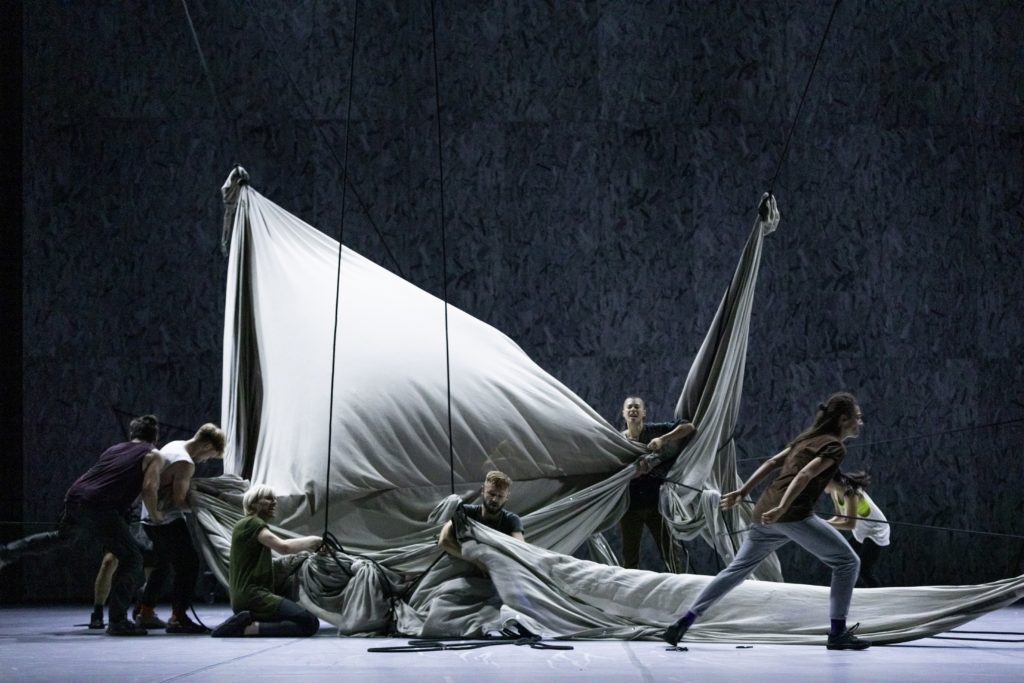
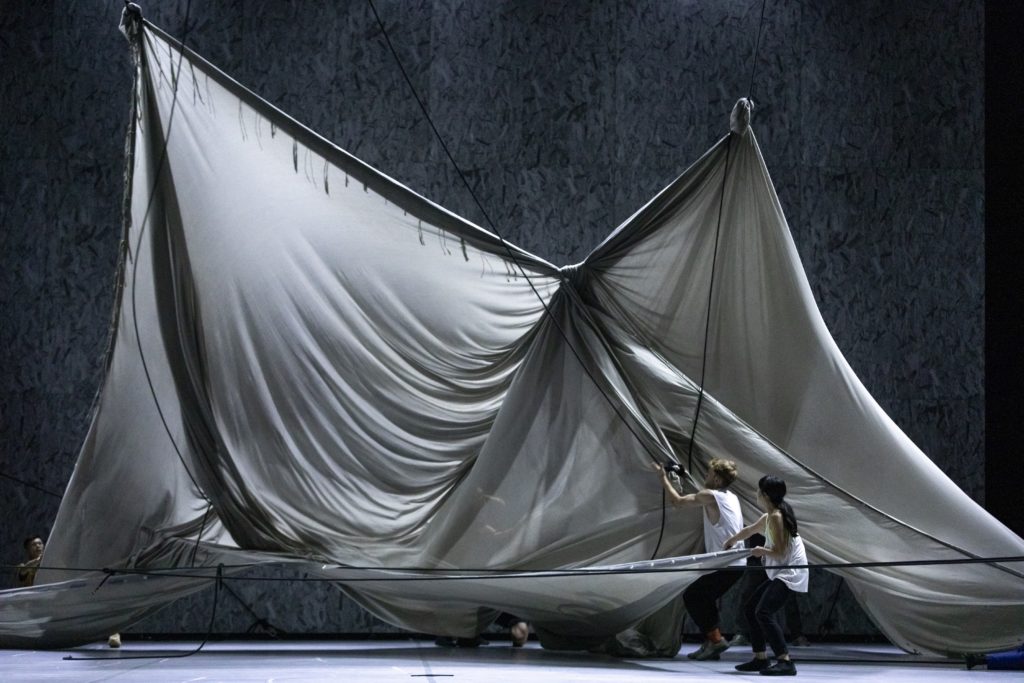
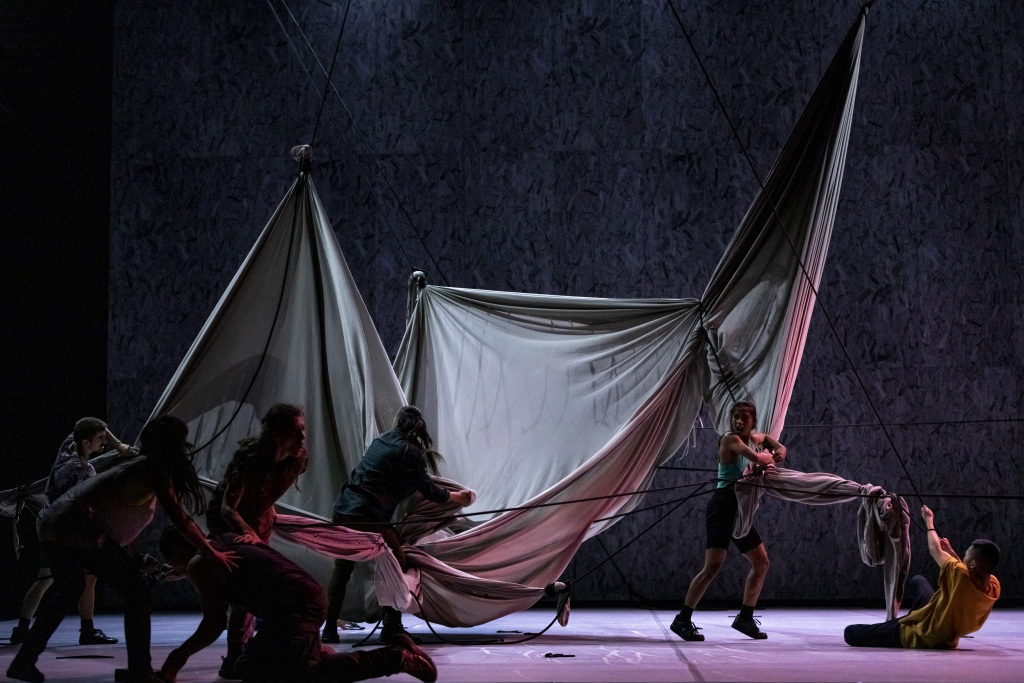
Samstag, 27.12.2019
19:30 Uhr
Komische Oper Berlin
Regie: Jefta van Dinther
Musik: David Kiers
Szenographie: SIMKA (Künstler*innengruppe)
Licht: Minna Tiikkainen
“Plateau Effect ist 2013 für das Cullberg Ballet entstanden.”



